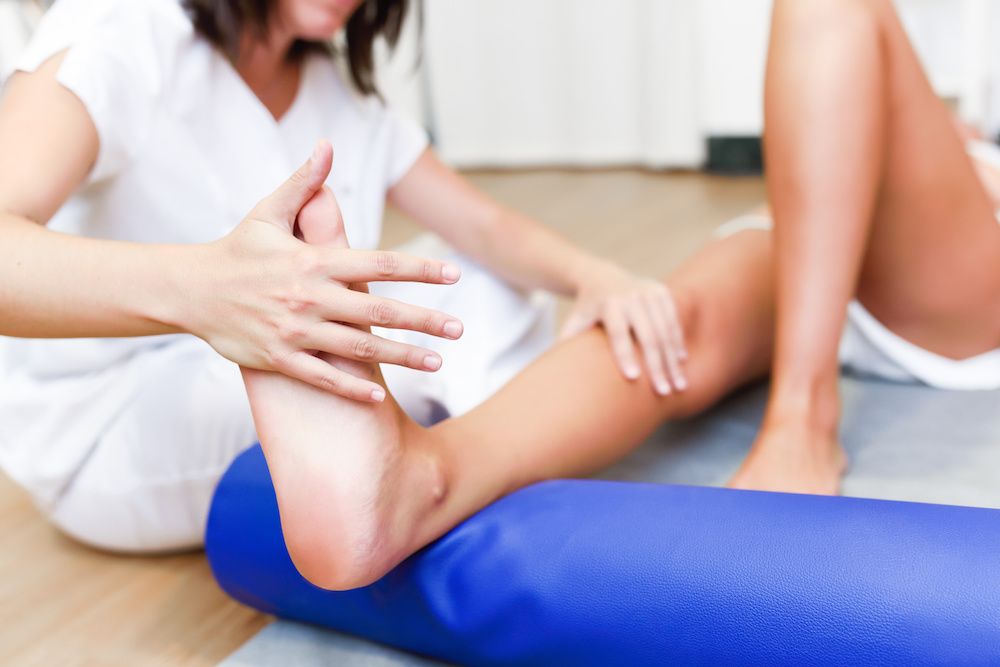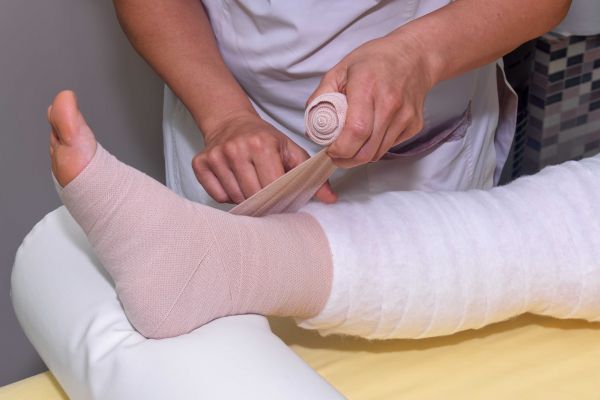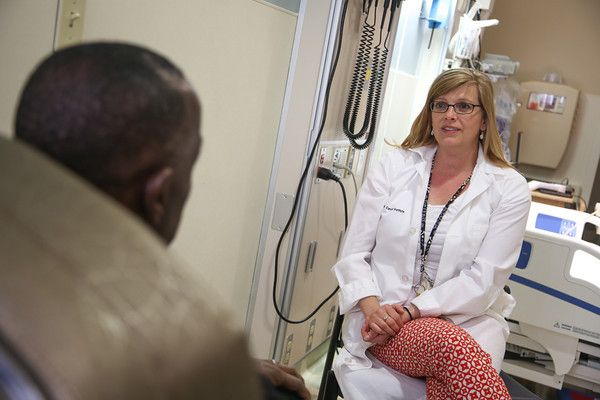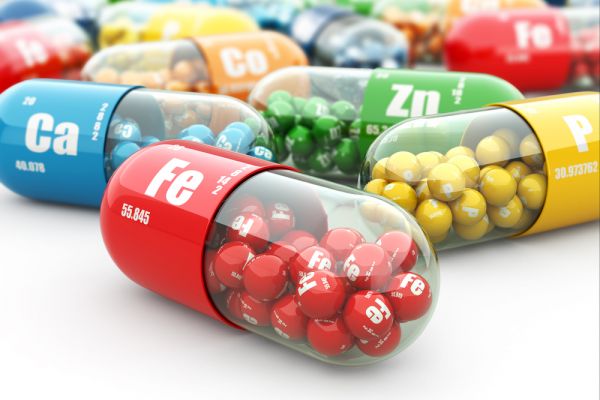Lymphedema—a potential side effect of cancer treatment—is abnormal fluid retention and swelling that typically develops in the arms or legs, but may occur anywhere in the body, including the trunk, breasts, genitals, face, head and neck. Symptoms may range from mild, with uncomfortable heaviness, fullness, tight skin, and tight-fitting clothing and jewelry, to severe, where the skin forms deep folds and becomes thickened, reddened, scaly and weeping. Although the condition is chronic, lymphedema can be treated.
Lymphedema occurs when lymph nodes or channels of the lymphatic system are removed or damaged by treatments such as radiation, surgery, and chemotherapy, or lymph node biopsy or dissection, where groups of lymph nodes are removed. As a result, lymph fluid does not circulate as it did before, and the fluid accumulates in a localized area. Lymphedema differs from other forms of edema (swelling) in that lymph is a protein-rich fluid. That means typical treatments such as rest, ice, elevation, water pills, ACE bandages, or TED hose (Thrombo-Embolic Deterrent stockings) don’t alleviate it.
Never miss another Cancer Talk blog!
Sign up to receive our monthly Cancer Talk e-newsletter.
Sign up!Heading Off Lymphedema
Talk to your doctor about whether your treatment plan or other factors—radical surgery, lymph node dissections, radiation to lymph nodes, non-healing wounds, obesity, or a family history of swelling—place you at higher risk for developing the condition. A certified lymphedema therapist can teach you strategies for reducing your risk or preventing the condition from worsening. These may include:
- Maintaining a healthy body weight; keeping your BMI at less than 30.
- Protecting the at-risk area (such as arm or leg) from injury and insect bites, keeping it clean and avoiding blood pressure cuffs, injections and catheters in that limb when possible.
- Avoiding tight clothing, heat, and extreme cold.
- Avoiding extremely strenuous activity (moving furniture, lifting objects more than 25 pounds, or starting a new intense exercise program) while recovering from treatment.
- Watching for early warning signs (sensation changes, tightness, heaviness, swelling, redness, and heat in a localized area) and telling your physician promptly if they occur.
Treatment Relieves Symptoms
Despite risk reduction methods, you may still develop lymphedema. Ask your physician for a referral to a certified lymphedema therapist, who can initiate a treatment technique called complete decongestive therapy (CDT). This therapy involves skin care with specific lotions and soaps, wound care, compression bandaging or garments, lymphedema-specific exercises, and manual lymph drainage. Don’t ignore the condition. Weeks, months, or even years later, the swelling may become permanent and cause the skin to become thick, red, warty, scaly, fibrotic and misshapen. Although lymphedema has no cure, treatment effectively improves the condition and helps you achieve a better quality of life. It's beneficial for patients to get involved with cancer support groups and other associations, and to take an active role in their care during and after treatment.



